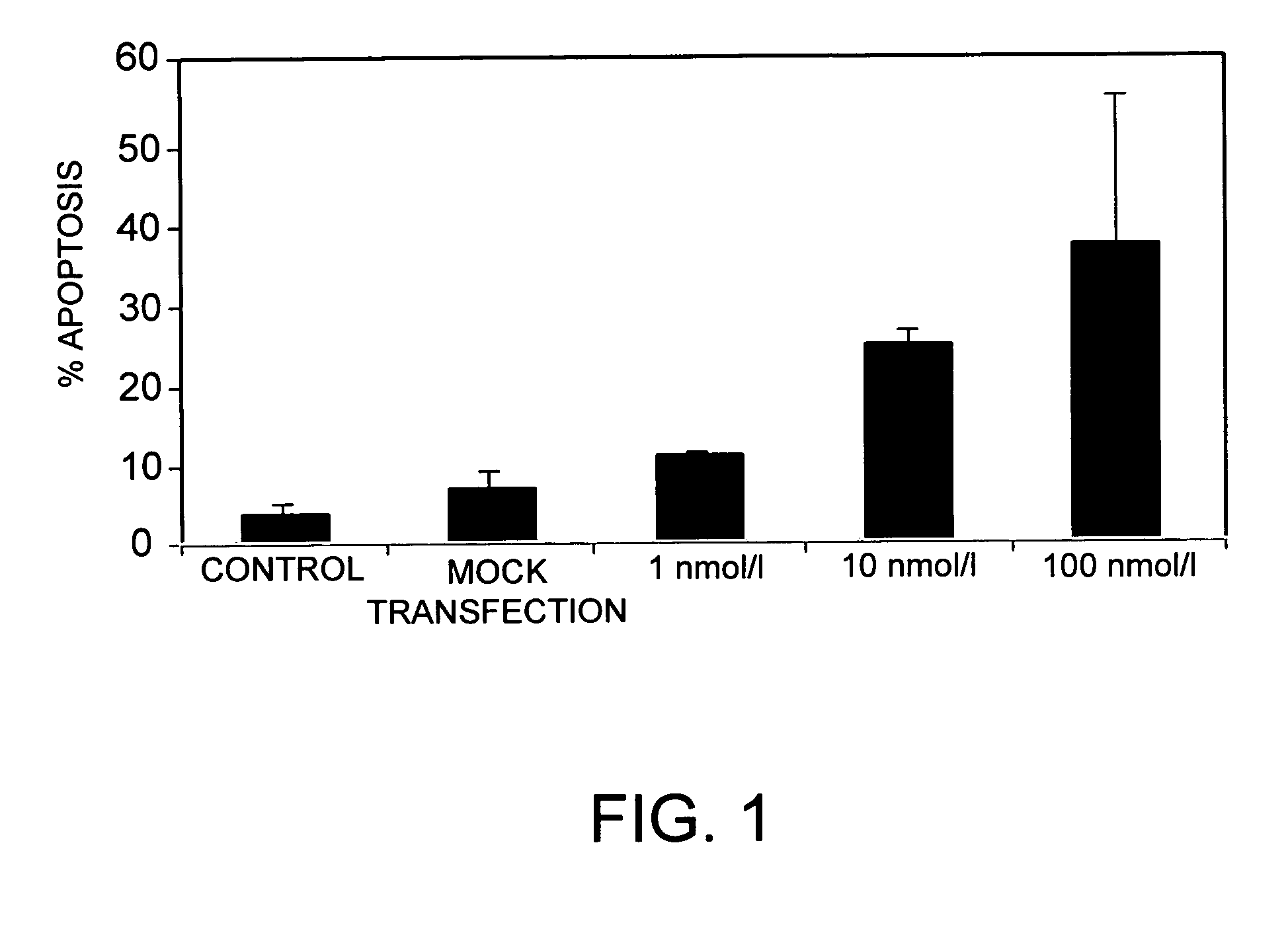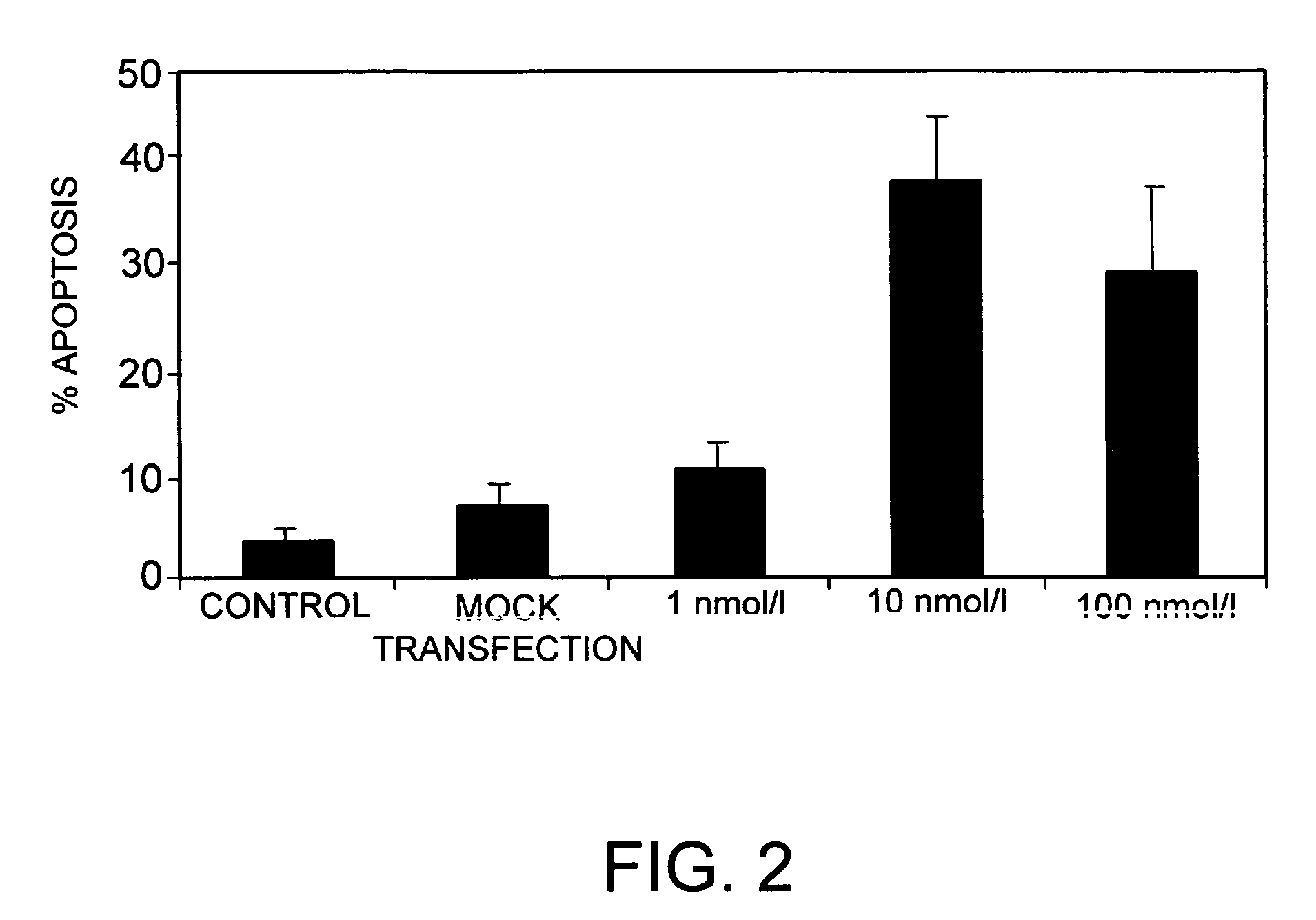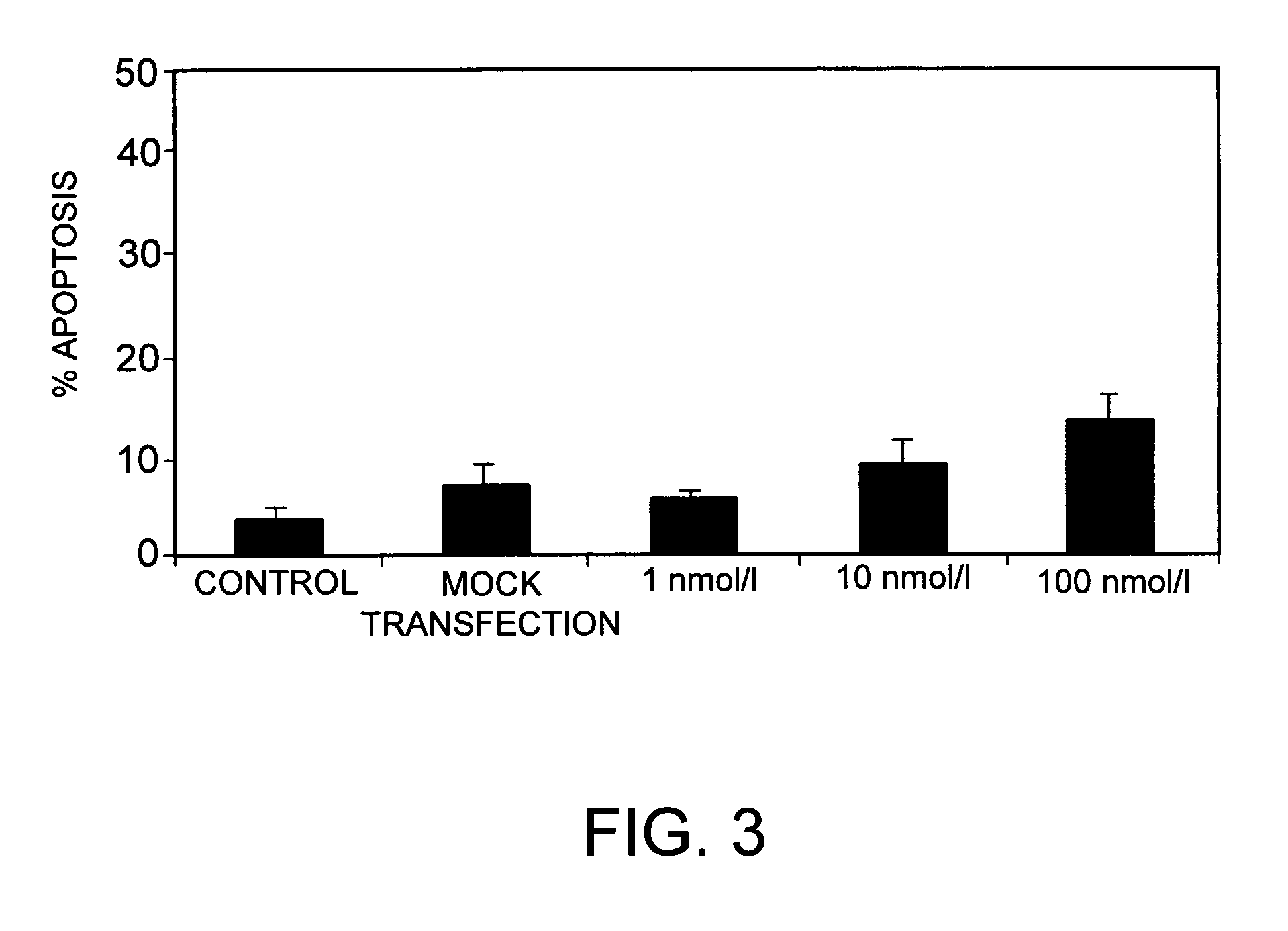Compositions and methods for inhibiting expression of anti-apoptotic genes
a technology of anti-apoptotic genes and compositions, applied in the field of compounding and modifying the expression of anti-apoptotic genes, can solve the problems of anti-sense approaches, low efficacy, inherent limitations of both agents, etc., and achieve the effect of inhibiting the expression of a target gen
- Summary
- Abstract
- Description
- Claims
- Application Information
AI Technical Summary
Benefits of technology
Problems solved by technology
Method used
Image
Examples
example 1
Gene Walking of Bcl-2
[0147]Selection of Sequences for siRNA Synthesis
[0148]Sequential BLAST searches were performed to identify sequences of 23 nucleotides within the sequence of human bcl-2 alpha (GenBank accession number M13994) or bcl-2 beta (GenBank accession number M13995) with 3 or more mismatches to any other human mRNA or genomic sequence. The 21 nucleotide sequence from position 3 to 23 of the 23mers were used for the synthesis of the sense strands of approximately 220 siRNAs. The corresponding antisense strands were synthesized to comprise a nucleotide sequence fully complementary to the 23mer search query, resulting in a 2-nucleotide single stranded overhang on the 3′ end of the antisense strand of the siRNA. The sequences of all siRNAs thus selected and synthesized are shown in Table 1, SEQ ID 7 to 444.
[0149]The sense strand sequences thus selected were further compared by BLAST searching to identify those sequences identically found in mouse bcl-2 mRNA, but with 3 or mo...
example 2
Inhibition of Bcl-2 Gene Expression by RNA Interference
[0164]The cells of the human pancreatic Yap C cancer line (German Microorganism and Cell Culture Collection, Braunschweig, (No. ACC 382)), were cultured at 37° C., 5% CO2 in RPMI 1640 medium (Biochrom Corp., Berlin) with 10% fetal calf serum (FCS) and 1% penicillin / streptomycin. Human skin fibroblasts were cultured under the same conditions in Dulbecco's MEM with 10% FCS and 1% penicillin / streptomycin.
[0165]The double-stranded oligoribonucleotides used for transfection have the following sequences, designated as SEQ ID No:1 to SEQ ID No:6 in the sequence protocol:
[0166]dsRNA 1, which is complementary to a first sequence of the human Bcl-2 gene:
[0167]
(SEQ ID NO: 1)S2: 5′- cag gac cuc gcc gcu gca gac c-3′(SEQ ID NO: 2)S1: 3′-cg guc cug gag cgg cga cgu cug g-5′
[0168]dsRNA 2, which is complementary to a second sequence of the human Bcl-2 gene:
[0169]
(SEQ ID NO: 3)S2: 5′- g ccu uug ugg aac ugu acg gcc-3′(SEQ ID NO: 4)S1: 3′-uac gga...
example 3
Treatment of a Pancreatic Cancer Patient with dsRNA 1 and 2
[0175]In this Example, dsRNA 1 and 2 are injected into a pancreatic cancer patient and shown to specifically inhibit Bcl-2 gene expression.
[0176]Synthesis and Preparation of dsRNAs
[0177]dsRNA 1 and 2 directed against the Bcl-2 gene are chemically synthesized with or without a hexaethylene glycol linker. Oligoribonucleotides are synthesized with an RNA synthesizer (Expedite 8909, Applied Biosystems, Weiterstadt, Germany) and purified by High Pressure Liquid Chromatography (PHLC) using NucleoPac PA-100 columns, 9×250 mm (Dionex Corp.; low salt buffer: 20 mM Tris, 10 mM NaClO4, pH 6.8, 10% acetonitrile; the high-salt buffer was: 20 mM Tris, 400 mM NaClO4, pH 6.8, 10% acetonitrile, flow rate: 3 ml / min). Formation of double-stranded dsRNAs is then achieved by heating a stoichiometric mixture of the individual antisense strands (10 μM) in 10 mM sodium phosphate buffer, pH 6.8, 100 mM NaCl, to 80-90° C., with subsequent slow coolin...
PUM
| Property | Measurement | Unit |
|---|---|---|
| weight | aaaaa | aaaaa |
| pH | aaaaa | aaaaa |
| pH | aaaaa | aaaaa |
Abstract
Description
Claims
Application Information
 Login to View More
Login to View More - R&D
- Intellectual Property
- Life Sciences
- Materials
- Tech Scout
- Unparalleled Data Quality
- Higher Quality Content
- 60% Fewer Hallucinations
Browse by: Latest US Patents, China's latest patents, Technical Efficacy Thesaurus, Application Domain, Technology Topic, Popular Technical Reports.
© 2025 PatSnap. All rights reserved.Legal|Privacy policy|Modern Slavery Act Transparency Statement|Sitemap|About US| Contact US: help@patsnap.com



